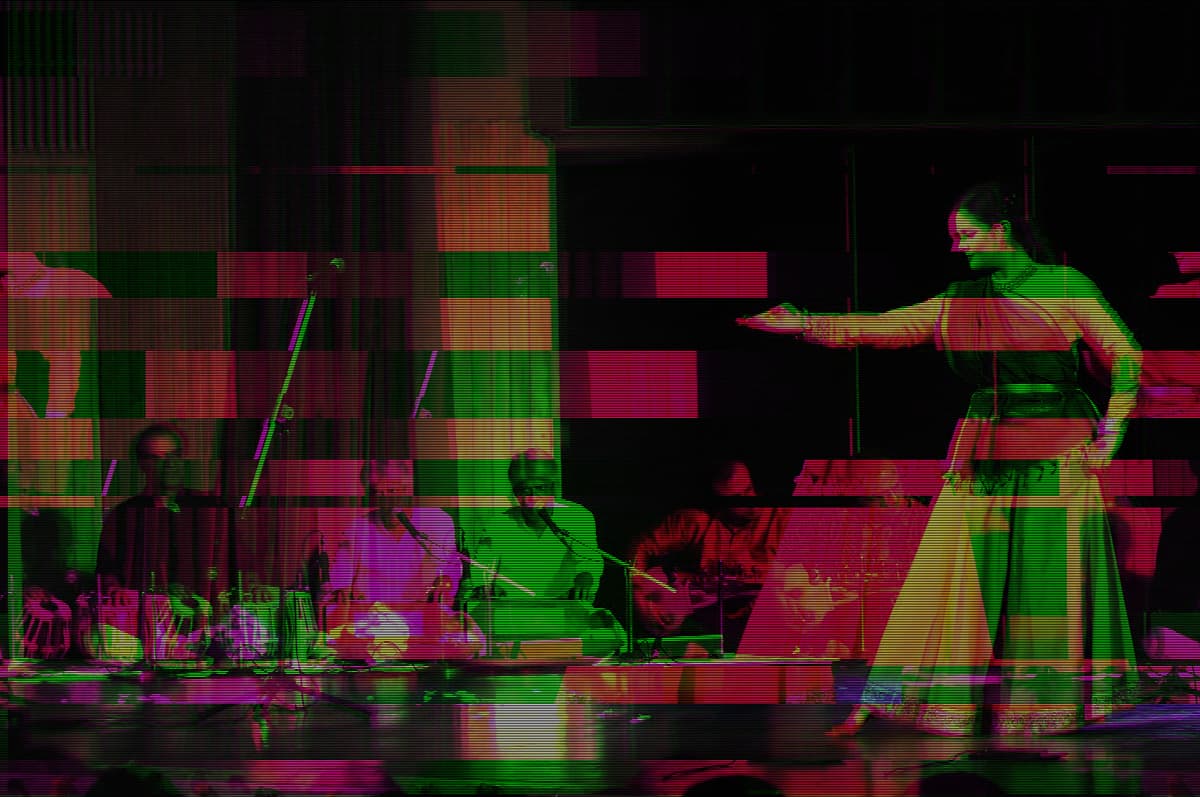At both the level of training and performance, there is a gap between Indian classical music and dance in the UK. It is not to say that they are disconnected but simply that they could work more closely together. Due to a number of reasons, many dance students are not so confident about the nuances of Indian classical music and recordings are increasingly used for performances. There is also a rising trend towards emphasis on choreography and contemporary experimentation rather than a strong musical ensemble and live interaction with musicians.
One could conduct a nationwide research survey to dissect this issue but I’ve taken a more personal route by speaking to a few young dancers who are carrying a musical proficiency into their work in kathak. At both the levels of training and performance, we tried to find ways that kathak dance can have a closer relationship with live music in the UK.
Saberi Misra comes from a lineage of the Jaipur gharana of kathak. She grew up surrounded by music in London and Calcutta learning kathak from her grandmother, Smt Susmita Misra, tabla from her father Pandit Rajkumar Misra and vocal music from her mother Smt Chandrima Misra. She loves playing with rhythm and clips of her practising syncopated patterns have had more than 4,000 hits on Facebook. At such a young age, she carries musicality confidently into her performances but she is admittedly unique. Saberi is in an ideal environment for musical training but others are not so lucky.
“…your laya cannot be strong if you do not have musicality.”
For those that are not from musical families, what are the options? “Go to music concerts, listen to recordings,” Saberi recommends. “It should also be compulsory for all kathak dancers to learn the basic foundations of tabla because the most important thing for a kathak dancer is laya (tempo) and your laya cannot be strong if you do not have musicality.” Students can also learn the basics of vocal music and an instrument to help them to communicate with musicians in their language. “There needs to be more collaboration between dance and music teachers to enable their students to have practice sessions together,” says kathak dancer Archita Kumar. “Introduce the idea of work experience for music students to gradually learn the specific skills involved in performing with dance.” Incorporating music within dance training is possible too as one doesn’t need to search far to stumble across YouTube videos of young American girls executing chakkars with accurate force and energetic footwork while keeping the time cycle through singing a melodic lehra. This vigorous training scheme introduced by Pandit Chitresh Das is now being carried forward passionately by his students across the world.
But for young students, parental support is key and that’s where understanding comes in. In order for parents to understand that kathak is a multidisciplinary art form, they must be exposed to such presentations.
“…a kathak performance is like a live music ensemble.”
“Live music enriches a performance and in the case of kathak it is vital in enabling the dancer to improvise – a fundamental aspect of the form,” says Archita. Perhaps dancers could take it upon themselves to explain to promoters that a kathak performance is like a live music ensemble. Saberi has found that there is a market for it too: “We underestimate audiences, thinking that they won’t understand if I start improvising in a seven-and-a-half-beat time cycle, but they really engage with it,” she says.
“…perhaps…still an underlying stigma…about playing with dance.”
Attempts have been made by dancers to incorporate live music into their work but sometimes budgets are constrained or perhaps there is still an underlying stigma in the music world about playing with dance.
To address the core of the issue that will affect the next generation, there needs to be more collaboration among music and dance organisations at an infrastructural level with holistic training schemes and conversations across the sectors, both in training and performance.
“I cannot overstate the importance of live music, especially for classical Indian dance.”
– Sooraj Subramaniam (dancer)
We have briefly highlighted this concern but I invite more voices to contribute to the discussion so that we can collectively ensure that kathak retains its soulful, live musicality and dancers become more confident to collaborate with musicians in the UK and beyond.
